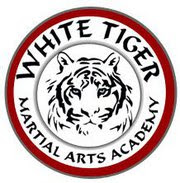Though these Concepts and Principles have been refined and are taught specifically and directly in Advanced Jiu Jitsu, they apply to the other Arts and Phases of Combat
EXAMPLE:
Deception and Distraction are both a major Concept and Principle in Ninjutsu, more or less every NINJA technique uses Deception and Distraction in application, and this was always the case when a Ninja fought a Samurai
A Boxer uses Deception and Distraction with his Feint, and this applies to Kickboxers, to all Striker
All use of Attack By Drawing uses them
In JJ or Wrestling a fighter uses them before a shoot to Clinch, before a Double Leg TD
EXAMPLE:
Principle 15 is FORK - as in Chess, and we have been referring to this at Sessions for a long time
A lot of these will be immediately apparent to you, and will recognise them from your regular practice, in Waza, in Drills, and in Sparring:
Principle 3: Distance
Principle 5: Creation - counter for counter - draw his counter - PIA - ABD
Principle 7: Velocity - broken rhythm
Principle 10: Frame - we have been using Frames on the Ground for several years and you all know some
Principle 11: Kuzushi - off balancing the opponent before a throw
Principle 12: Reconnaissance - Know your enemy and know yourself
Principle 14: Tension - Chi Sao and NRG drills
Principle 16: Posture - Kamae - the technique comes from the Kamae - eg Kihon Happo again
Principle 17: False Surrender - armbar as example again, act ike you are giving up and letting him have it, he goes from "advanced" to "standard" and doesn't pay attention to the details, giving you a window to counter
Principle 19: Isolation - Trapping HIA
Principle 24: Overload - Disproportionate application of your resources to target a specific part of your opponent’s body eg the armbar, your entire body against the elbow joint of the opponent’s arm
Principle 25: Anchor - Pinning any part of your opponent’s body to a surface to inhibit mobility - applies to the wall as well as the floor
Principle 28: Head Control - as in Thai, Kali dumog, wrestling
Principle 29: Redirection - Aiki Jutsu
Principle 30: Mobility - movement - sabaki
Principle 31: Centerline - Wing Chun
Some are not as immediately obvious, but you do know them
Principle 6: acceptance - you have the Mount, your are preparing your attack, you get upa - accept the upa and pull Guard to stage one - you learn this in Ground Bud, the first drill
Principle 8: Clock - by constantly feeling the moves as you receive them from your training partners you understand the timing, so you can find the opening to counter - eg opponent has the Mount and spins, you escape and counter
Principle 9: River - a river flows naturally, downhill, following the path of least resistance - when the river encounters an obstacle it looks for the way round it, it does not actively seek the obstacle, it encounters it and works round it - and the saying "Be like Water" of course
Principle 13: Prevention - Self Defence - prevent the attack - this is the major starting point in Kempo, deal with the Attack, punch, kick, grab, then use the correct response
Principle 26: Rachet - micro rachet or macro rachet - cranking on the scarf hold, either bit by bit, or one go - once it's on, he can't reverse the direction
